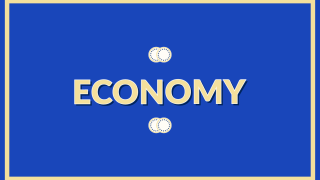Mexican society has experienced phenomenal change and has achieved the feat of becoming majority middle class. Felipe Calderón understood the untdelying dynamic in 2006 and that’s the reason why he was able to beat López Obrador. The inherent revolution in this transformation is staggering and its implications –economic and political- extraordinary.
The concept of middle class is difficult to establish and complex to grasp, but is nonetheless real and, above all, politically relevant. For those employing the term “social classes” from a Marxist perspective (proprietors of the means of production or exploiters vs. the workers, the exploited), the notion of middle classes is to a great degree repugnant. However, practically all modern societies, and assuredly all developed societies, possess a common characteristic, one that is independent of their activity or employment: the majority of their populations earn sufficient incomes to be able to live in an urban society, desire to improve their position in a systematic manner, and do not want to risk their accomplishments.
In a book titled “Clasemedieros: poor no more, developed not yet”, Luis de la Calle and I argue that beyond income, what defines the middle class is an attitude. A person or family is middle class when they have achieved a minimum of economic independence to do more than survive. The designation “middle class” includes persons exercising a profession, bureaucrats, employees, and academics, all of whom enjoy sufficient family income to cover their living expenses. Evidently, these elements are very general, occasionally contradictory, and of little use as a base for a definitive description. Additionally, on occasion, the definition of “middle class” derives from income levels, in others, from education, or in yet others, from an individual’s type of employment. Surveyors of public opinion utilize the terms to refer nearly always to values and attitudes: those who own their own home; possess an automobile; perceive a job as permanent, and consume (or aspire to consume) a certain variety of goods. In the U.S., for example, middle classes are usually defined as those with an annual income of between $25,000 and $100,000 USD, which would include up to 75% of its population.
In Mexico, there are no conventional and across-the board definitions for what constitutes the middle class, but there is, no doubt, a growing segment of the population that shares many of the elements defined by the term. More importantly, if indeed the 2006 presidential elections proved anything, it is that a very significant part of the population deems itself to be middle class and is bent on protecting this status. This fact, that of having a sense of ownership, belonging, and the right to preserve this, was indubitably a defining factor in the most recently held presidential election in Mexico.
In fact, the history of the 2006 elections briefs us on the extent to which the country has changed. According to diverse probes, the population perceiving fewer than nine minimum salaries of family income, in addition to those with more than fifteen minimum family-income salaries, decided on their vote relatively early in the electoral process and changed little over the subsequent months. The population in the middle, those with a family income of between nine and fifteen minimum salaries, vacillated throughout the process and, in the majority, ended up favoring Felipe Calderón, thus constituting the election’s deciding vote.
According to a expert pollster, this population that modified their vote at diverse moments is characterized by the following elements, i.e., that over the past several years, it has been able to purchase a house, has nearly maxed-out their credit cards, understands that the future of their children depends on their achieving computer expertise, attaining high educational levels, and speaking other languages, has an automobile, and aspires to raise their consumption level systematically. Evidently, this concept of middle class is very elastic and can include, under this heading, persons who barely obtained satisfaction of the minimal conditions (perhaps the majority of whom are found within the range of nine to fifteen minimum wages) and those at risk of losing what they gained, as well as relatively comfortable persons, who face no such risk.
The lesson of the last presidential contest is that the most politically relevant sector of society today is the middle class. It would not be exaggerated to affirm that the traditional political bases, mostly unions, are no longer decisive in electoral terms, maybe not even relevant, and that only those potential leaders capable of understanding and exploiting this dynamic would be able to win the presidency. Despite the apparent paralysis, the country is clearly changing swiftly, bringing up new realities that neither the political discourse nor the political experts have grasped.
Mexico is becoming a mainly middle class country. Urban traffic is perhaps the most apparent indicator of the transformation that the country has experienced, but the signposts that demonstrate this middle-classedness are many and very diverse: occupational type; housing sales; their children’s educational level; the proportion of women in the work force; the quality of the dwelling; the purchase of insurance; type of hospitals, movie theaters, tourism, universities, etc., etc. Certainly, the fact that the majority of the population could be grouped in this middle-class category does not deny the social problematic of the country, nor does it diminish the poverty and marginality that characterize a great number of Mexicans, but it does evidence the fact that the country is moving in a desirable direction.
The big question for the nation’s future inquires, with enormous political, social, and economic and, doubtlessly, electoral implications, how to accelerate transformation of the Mexican society with the purpose of guaranteeing the achievements of this incipient middle class, and at the same time, how to added to it an ever greater number of families found below this definition. Ten years ago, a modest regulatory change made it possible for several million Mexican families to have access to mortgages and, thus to their first-ever own home. This was the first step into turning Mexican society into a middle class one. If such an apparently minor change had such a major impact, one can only wonder what a change in the labor and tax laws could do. The implications of this transformation are unfathomable.
Middle Class






Comments